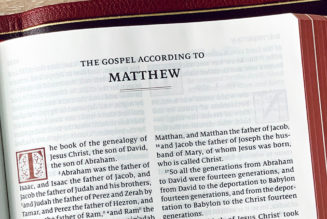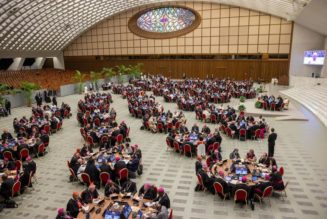
The external forces setting the political and economic pace for Ireland will continue to shape the country for some time to come.
Ireland is experiencing political upheaval as never before, but the chief driver in this appears to have little to do with the internal politics of the island.
Governments, north and south, are being dissolved or formed, elections called or postponed: The only certainty for all living on the island is a changing political reality. The preeminent force behind this is Brexit. Yet, few in Ireland have come to terms with this new reality; fewer still can gauge its consequences.
In the Irish Republic, a general election has been called. On February 8, 2020, across 39 constituencies, voters will go to the polls to elect 160 members of parliament, or Teachta Dála, for the 33rd Dáil Éireann, the Irish Parliament.
For many in the Republic, politics is still shaped by the civil war that followed the 1921 partition of the island, creating Northern Ireland and the then-Irish Free State. Eventually emerging out of that bitter conflict came the two most prominent factions in Irish politics today: the Fine Gael (pro-treaty) and Fianna Fáil (anti-treaty).
In the southern Irish state, in election after election, Irish voters have been wary of giving either party an overall majority. The proportional representation electoral system (entailing a single transferable vote) ensures that the country has been doomed — or blessed — with a perpetual series of coalitions. In recent elections, the Fianna Fáil and Fine Gael vote share combined tends to be over 50% of the popular vote. Thereafter, one of the two major parties has gone on to form a coalition government with minor parties of differing hues.
That said, the Irish electorate has a limited choice. In the past decade, as the conflict in the north abated and a severe economic recession gripped the south, politics in the Republic has witnessed a clearer demarcation between those on the left and those fully signed up to the neo-liberalism of Brussels. Fianna Fáil and Fine Gael are centrist parties, increasingly socially liberal. Other than a few fringe groups, all other political parties contesting the forthcoming election are, to varying degrees, left-wing — Labour, Sinn Fein, Social Democrats, and a whole host of socialist, Marxist, and independent candidates.
Surveying this political landscape, for any Irish conservative, whether social or economic, this is pretty dire. All the main political parties support the recent social legislation, on same-sex “marriage” (2015) and abortion (2018), both introduced via referendum. About the European Union all parties are enthusiastic.
Current predictions suggest that in the forthcoming election, Fine Gael will lose power to Fianna Fáil, with Sinn Fein poised to strengthen its position as the main party on the left and, therefore, the primary parliamentary opposition to the inevitable Fine Gael–Fianna Fáil power axis.
One thing is certain about elections in the Irish Republic, it is always a case of plus ça change.…
But Ireland is changing in other more unexpected ways.
Brexit has changed and is changing Ireland. Urgent talks are now underway between London and Dublin to achieve a speedy agreement between the United Kingdom and Ireland, and by extension the wider EU, as the realization dawns that Brexit is really happening. This sense is prompted by the economic reality confronting any future Dublin government, namely, that Britain accounts for around one-fifth of Irish trade, generating more than a billion Euros per week for the Irish economy. Given Ireland’s trade imbalance with the U.K., Dublin needs a workable deal as much as London does — more so, in fact.
For Ireland the fallout from Brexit has not been just economic, though. Brexit has sparked serious discussion around the possibility of a united Ireland. Once confined to republican speeches at windswept commemorations for long-dead martyrs, today’s talk of reunification is taking place, albeit in hushed tones, in the corridors of power in Dublin, Belfast, and London.
The fact is that Brexit has begun to unravel the British Union. Scotland and Northern Ireland voted against Brexit, England and Wales for it. Both the former territories are now considering their options, each feeling, for different reasons, increasingly distant from Westminster’s Conservative government led by Boris Johnson.
For over three years, January 9, 2017, through January 11, 2020, Northern Ireland’s local elected assembly at Stormont was suspended as a result of a deadlock between the Democratic Unionist Party (DUP) and Sinn Fein primarily regarding the status of the Irish language, abortion, and same-sex “marriage.” In the end, the latter two issues were legislated by Westminster over the heads of DUP opposition. Now, it seems on the official recognition of the Irish language, the DUP has had to give concessions to Sinn Fein to restart the assembly.
The much-vaunted restarting of the Stormont devolved administration in Belfast was not, however, so much an example of a working devolved settlement within the U.K. polity as much an act of political desperation on the part of Ulster’s unionists. The recent restoration of Stormont occurred two days before an election would have had to be called as the Stormont Assembly on account of the three-year suspension. If voting in that election had taken place, following the voting patterns in December’s U.K. general election, the main Unionist party, the DUP, would have lost votes and seats — as it did in the December election — but more crucially still, its hold on the First Minister post — effectively Northern Ireland’s prime minister awarded to the majority party within the assembly. So any talk of the Democratic Unionist Party working toward a peaceful settlement to the underlying political fault line that is Northern Ireland needs to be taken with a large pinch of salt.
DUP credibility has been hit further, and maybe more, by its posturing for “a hard Brexit.” That stance has now backfired. Because of Brexit, Dublin needed an economic barrier between Northern Ireland and Great Britain as opposed to one on the island of Ireland. This economic barrier in the Irish Sea became a non-negotiable demand from Dublin, one backed to the hilt by Brussels. While the DUP MPs were of use at Westminster to prop up an unpopular prime minister, Theresa May, this “Irish Sea border” remained a sticking point in negotiations. When the parliamentary arithmetic was restored to positive by the popular new prime minister, Boris Johnson, the DUP was discarded, and quickly London agreed to a “border” down the Irish Sea.
It appears the DUP has been hoisted upon its own petard. They got Brexit, but a Brexit that has weakened the Union. Furthermore, it has moved Ulster into a closer economic relationship with the Irish Republic. And as unionists know and fear, economic union, however loose, is only one step away from political union, however subtly expressed.
Across Ireland, the various political processes appear to be stuck in varying degrees of paralysis. Consequentially, more than ever, the external forces now setting the political and economic pace for Ireland will continue to shape the country, and for some time to come.







